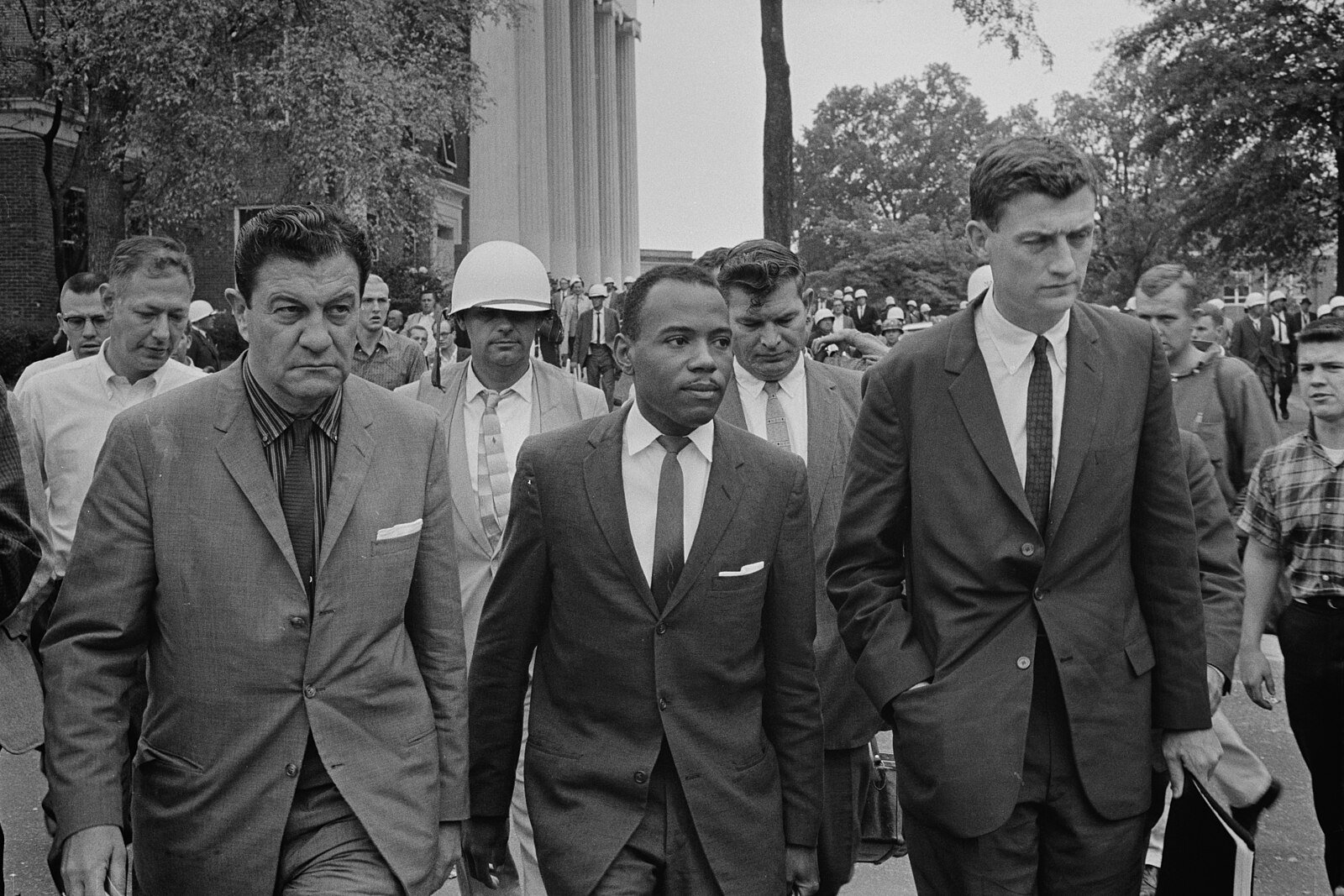The James Meredith Case, 1962 (Edexcel GCSE History): Revision Note
Exam code: 1HI0
Summary
Although the Supreme Court had ruled that education should be desegregated in 1954, by the start of the 1960s there had been little change in many states in the South. There were no integrated schools in Mississippi. This issue was highlighted by the case of James Meredith. When the University of Mississippi repeatedly refused his application, James took his case to the Supreme Court. The University of Mississippi refused to accept their ruling and still denied Meredith entry. When President John F Kennedy intervened and sent federal marshals to ensure he safely attended, the result was riots and two deaths. Meredith eventually completed his studies and universities all over the South had been shown that the government would step in to enforce desegregation if they did not comply.
Desegregation in Southern universities, 1956-1962
Despite the Supreme Court ruling in 1954 that segregation in education was unconstitutional, many universities in the South had no Black students
Although the universities weren’t officially segregated, Black students were always unsuccessful when they applied
What happened to James Meredith?
James Meredith was the grandson of an enslaved man and had served in the United States Airforce for five years
In 1961, after leaving the airforce, Meredith was inspired by the inauguration speech of John F. Kennedy and decided to enrol at the University of Mississippi
Seven years after the Brown v. Topeka ruling, there were still no desegregated schools in Mississippi
Meredith’s application is twice rejected by the University of Mississippi
The NAACP decided to support him and take the matter to court - arguing that the University’s refusal to admit Meredith was because he was Black
In June 1962 the Supreme Court ruled that Mississippi University had to accept Meredith as a student
How did the University of Mississippi React to the Supreme Court Ruling?
The University ignored the Supreme Court ruling and still refused to allow Meredith to begin his studies
When Meredith arrived at the University on 30 September 1962, he was physically prevented from enrolling by being stopped from entering the building
President Kennedy felt he had to act after being criticised for not doing more to help the Freedom Riders
Kennedy sent 320 federal marshals to protect Merideth, ensure he enrolled and escort him around campus
The federal marshals were outnumbered by over 2,000 pro-segregation protesters who threw firebombs and rioted
Two people were killed, 166 marshals and 210 protesters were wounded
Kennedy sent 2,000 troops to regain control and 300 hundred soldiers remained on campus until Meredith had completed his studies

The significance of James Meredith’s case
It showed that the federal government was willing to get involved to enforce desegregation regardless of the civil unrest caused
It prevented other universities from taking a racist stand like the University of Mississippi had
It meant that James Merideth became the first Black student to graduate from the University of Mississippi
Examiner Tips and Tricks
Events such as the James Meredith case are significant because they set a precedent. This means they set an example either for other people to follow or for judges to give similar verdicts in other court cases. When explaining why an event is significant, it is always a good idea to examine whether it sets any precedents.

Unlock more, it's free!
Did this page help you?